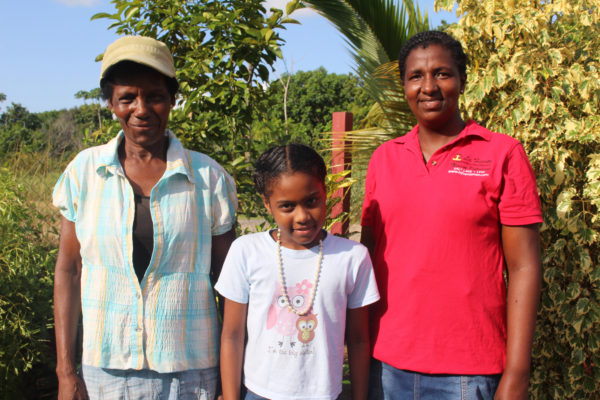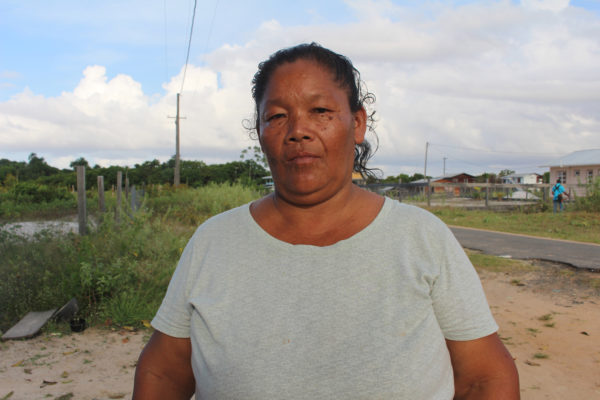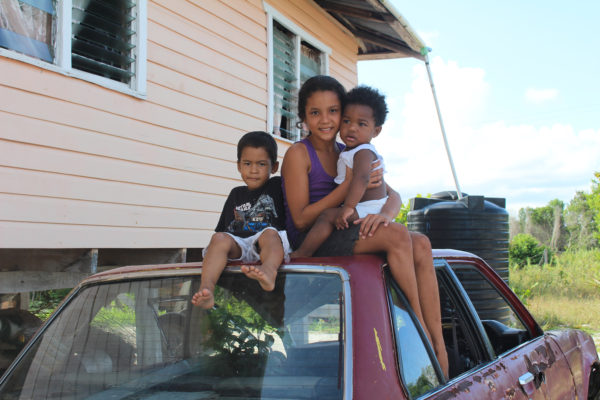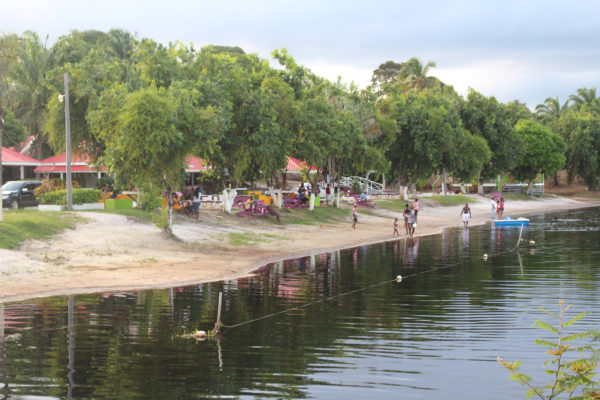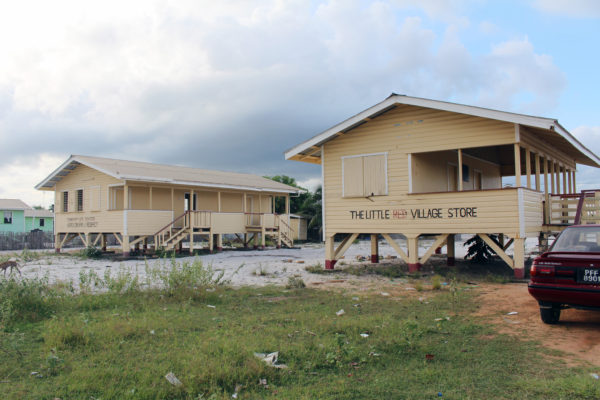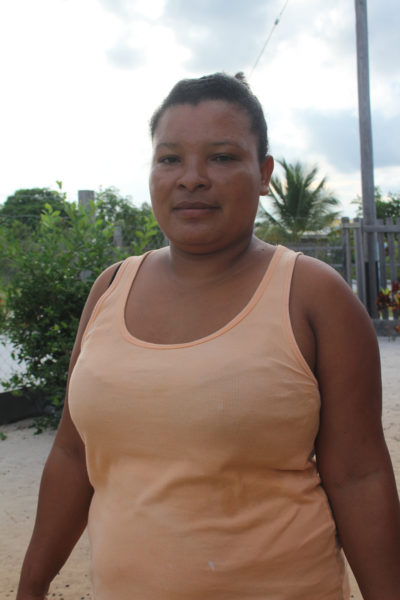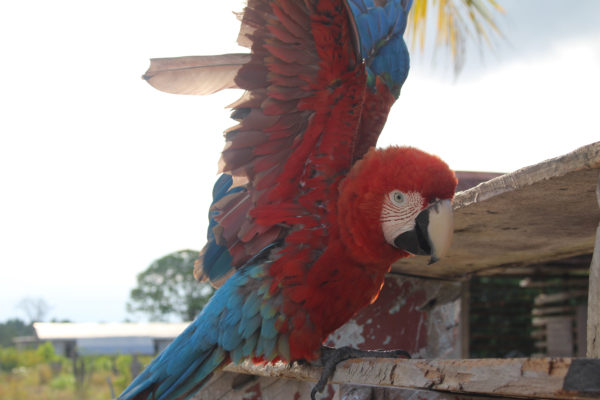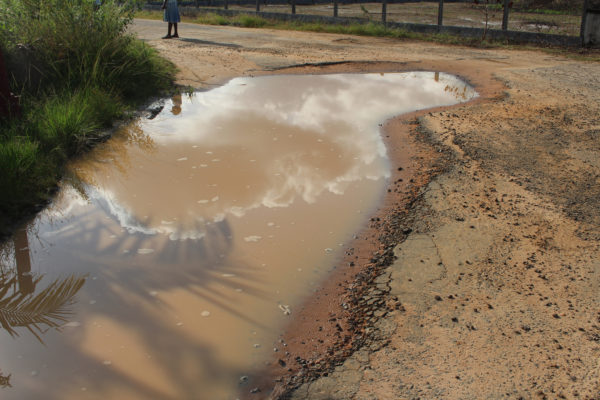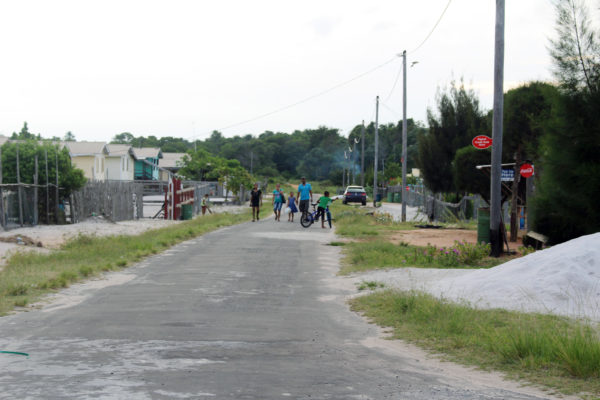To get to Sandpit, Onderneeming on the Essequibo Coast one has to travel to Suddie and take a car from the car park. It is just a short distance away.
There are houses all along the access road to Sandpit and one must cross a concrete bridge, which sits over a sparkling black water creek. On a section of this creek is Rooster’s Resort. It was a week day in August and the resort was teeming with children and their parents. Happy cries filled the air as they swam and pedalled boats on the water. A few of them stood on an elevated platform on which a small plane also rests.
Once over the bridge, the hire car began its slow drive across the red-sand road nicknamed ‘Abortion Road’ by villagers. They insist that the rough ride could make a pregnant woman lose her baby. Though the road is less than a mile long, its deteriorated state made it seem longer.
This reporter was relieved to get out of the car at Sandpit Phase Two; the driver was taking other passengers further down the road to the Little Red Village. Residents said that there are squatters living even beyond there, all the way to the creek at the back but the vehicles don’t get that far.
Lavern Griffith moved to Sandpit Phase Two seven years ago. She said it was sparsely populated at that time and her closest neighbours were the Hernandezes living on the far end. “We had only a track to walk on, but what I suffered more for was water. They used to bring the black water from the creeks in a black tank on a Canter and we used to pay $1,000 for a drum every week. We would use that to bathe and wash. And we would catch rainwater to drink. Then in 2014 we get water,” Lavern said.
Sometime last year the villagers were provided with electricity but not all of them as some of the houses are still to be wired.
Griffith is a housewife and she has a thriving kitchen garden, which saves her from having to buy greens from the vans that come along almost every day. Some vending vans take fruits and vegetables to the village, others take meat, fish and water.
Griffith’s husband works in the interior, like most of the other men in the village. Those who don’t work in the interior plant pineapples and ground provision on a large scale, while some operate coal pits and sell the coals.
A few women in the village work at the Suddie Hospital. Griffith said there is usually no problem when it comes to transportation. It costs $100 each way. It’s only once in a while, she said that persons might have to walk out to Suddie.
“I like the area because it is very quiet. By the time more people start occupying it, it’ll become noisy but for now it’s quiet. The place has developed a lot but it would be nice if they fix the road.
And if people start coming and occupying their lands then the bushes can be cut down and the place will become more developed,” Griffith said.
Clare Hernandez, who lives at the far end said she has been living in Sandpit for ten years. She can’t recall anybody else living there at that time and the Little Red Village was not even in existence as yet.
“It did rough bad to get water. We had to dig a pond to get water to bathe and wash. When rain fall we use to get rain water to drink,” Hernandez said.She is originally from the Pomeroon and for her life in Sandpit is much easier when it comes to get transportation. To get out of Pomeroon, Hernandez said, meant travelling by boat at a cost of $1,000 per person. It also meant having to wait for the boat to full, whereas on the Coast she can just hop into a car.
However, when it comes to farming, she said, Sandpit is sadly lacking in comparison to the Pomeroon. The soil in the Pomeroon, she said, is rich and she had no trouble when it came to harvesting.
Planting in Sandpit means keeping a careful daily watch over her little kitchen garden and guarding against the acushi ants that eat the roots of the plants.
As we talked nieces and nephews who were holidaying with Hernandez and her family looked on. One girl sat with her brother and a baby cousin on a car that had seen better days. The other little ones played nearby, while some the older ones looked on.
Hernandez’s wish now is that they could be provided with street lights.
Bervally John sat in her backyard under her cherry tree chatting with her husband. Surprisingly, John’s migration was urban to rural.
She and her family made the move seven years ago from Sophia in Georgetown. She said it was mainly because life there was fast paced and she preferred a much simpler life for her children.
But the desire to see her children raised in a rural environment didn’t happen coincidentally. John grew up in Saxacalli, a village close to Bartica. She was a country girl at heart.
She said life can be difficult anywhere, for her family the hardest thing was starting over in a strange environment.“Food for the Poor had set up a well and we used the well water to cook and wash,” she said. “We used the well probably for two or three years before we got pipe water.”
Her concern right now is that the community lacks unity. Sophia and Saxacalli, she said, were more closely-knitted. She thinks it may be because people from all walks of life have settled in Sandpit and have brought with them their different cultures and traditions.
In addition, the settlement is less than ten years old and not well populated; it is likely that other people will settle there in the years ahead.
“The road is a disadvantage about living here. We need a better access road. Some days you have transportation, some days very few,” she said. “The drivers too complain about the road damaging their vehicles so they make problems about coming in. Employment here is another disadvantage. Many persons are forced to work in far off places.”
Nonetheless, John said she was contented and comfortable. Sandpit, Onderneeming, she believes, is the place where her children will be easily guided into adulthood.
Before leaving, the World Beyond Georgetown took a quick walk down to road to where the white sand turned red, and the neat rows of uniform houses built by Food for the Poor loomed into view—the Little Red Village. But time was against us and there was no opportunity to speak with residents there.

